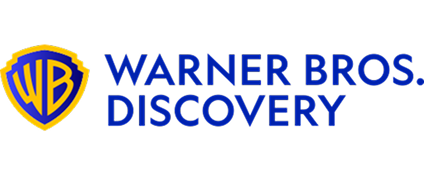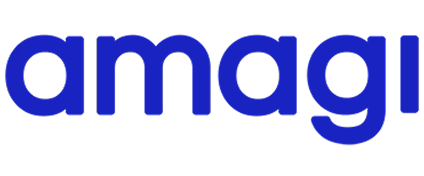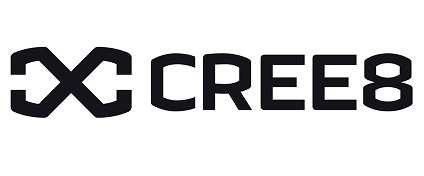Finding Global Production Partners in the Entertainment Industry

Introduction
For content acquisition, co-production, and studio leadership, the process of finding and vetting production partners, sourcing, in the entertainment industry represents one of the most critical and complex strategic functions.
In an era defined by the demand for hyper-localized content and global collaboration, the traditional, network-based scouting model is no longer sufficient. It introduces unacceptable levels of financial and operational risk.
The future requires a shift from reactive partner finding to strategic, data-driven partner sourcing. This guide provides the executive framework for mastering this process, ensuring that every partnership decision is founded on verifiable intelligence and rigorous due diligence.
Table of content
- The Strategic Imperative: Redefining Production Partners Sourcing
- The Friction Points: Core Risks of Global Collaboration and Cross-Border Co-Financing
- From Risk to ROI: The Strategic Value of Data-Driven Partner Sourcing
- The Data-Driven Framework for Sourcing Production Partners
- Vitrina: The Platform for Strategic Sourcing and Global Production Partners
- Conclusion: The Future of Entertainment Industry Collaboration
- Frequently Asked Questions
Key Takeaways
| Core Challenge | The need for global partners conflicts with the industry’s fragmented data, making cross-border co-financing and M&E vendor qualification opaque and high-risk. |
| Strategic Solution | Implement a unified data platform to centralize project tracking, verify company credentials, and map collaborator networks globally. |
| Vitrina’s Role | Vitrina provides the world’s most comprehensive, verified data map of the global M&E supply chain to enable secure, strategic partner sourcing at scale. |
The Strategic Imperative: Redefining Production Partners Sourcing
The content landscape has irreversibly globalized. Streamers, studios, and independent producers are increasingly engaged in global collaboration to access regional talent, tap into local subsidies, and secure IP that resonates with diverse audiences.
This shift has elevated production partners sourcing from a tactical function to a core strategic mandate. According to a 2025 PwC Global Entertainment & Media Outlook, the E&M industry’s high-growth areas are dominated by regional markets like China, India, and Indonesia, confirming that global sourcing is essential for capturing future revenue.
However, the methods for finding and vetting these partners have lagged behind the speed of the market. The sheer volume of the entertainment industry supply chain—estimated at over 600,000 companies globally—is simply too vast for manual processes. An executive mandate must establish a system that guarantees three things:
- Speed: Time to contract for new partners must be cut from months to days.
- Verifiability: All potential partners must be vetted against an objective, verifiable track record, not self-reported claims.
- Risk Mitigation: The high risks associated with cross-border co-financing and legal compliance must be pre-emptively managed through data.
In this context, successful partner sourcing is the ability to locate niche expertise anywhere in the world and enter into a production alliance based on quantified, rather than anecdotal, trust.
The Friction Points: Core Risks of Global Collaboration and Cross-Border Co-Financing
The very benefits of global collaboration—financial risk-sharing and market expansion—are offset by inherent data and operational challenges.
Research indicates that the primary risks in the film business relate to inadequate information provision and lack of diffused sector knowledge, which obscure the true nature of risk characteristics.
Risk 1: Legal and Financial Complexities in IP and Revenue Allocation
The fragmentation of the global market introduces profound legal and financial complexities. When multiple jurisdictions and financing structures are involved, negotiating intellectual property rights (IP) and defining revenue-sharing agreements can dramatically increase transaction costs and slow down the process.
- IP Compliance: Ensuring that IP rights are clearly defined and legally compliant across all territories is a labyrinthian task. Disputes over revenue allocation and differing legal systems are common friction points that can hinder communication and decision-making during production.
- Co-Financing Risk: While co-financing is a tool for risk distribution, its success depends entirely on the transparency and financial stability of all parties. The opacity of private company records makes traditional due diligence methods insufficient for managing financial risk in complex, multi-party funding structures.
Risk 2: The Absence of Rigorous M&E Vendor Qualification
The most significant operational risk in production partners sourcing is the lack of standardized, objective M&E vendor qualification. Executives often rely on a company’s past successes, but have no easy way to confirm their current capacity, specialization, or executive stability.
- The Specialization Deficit: The entertainment industry requires ultra-niche expertise—from specific VFX techniques to complex localization services. A general search cannot accurately map this specialization, leading to costly mismatches.
- Data Integrity: The absence of a single source of truth means that crucial data (e.g., active project slate, key executives, specific production capacity) is scattered, delayed, or subject to self-reporting bias. This leaves the executive vulnerable to production delays and contractual breaches, as there is little control over how funds are spent post-investment.
A clear focus on risk management in pre-production is required, but it is impossible without verifiable, deep data on the partner’s actual operational history.
From Risk to ROI: The Strategic Value of Data-Driven Partner Sourcing
By solving the data and transparency deficit in global collaboration, a strategic approach to partner sourcing delivers demonstrable value well beyond simple efficiency.
- Maximized Return on Investment (ROI): Strategic sourcing ensures that capital is deployed to the most qualified partners, which reduces the likelihood of budget overruns and project failure. By accessing global talent that fits precise criteria, the quality of the final content is optimized, directly impacting its market success.
- Accelerated Market Access: The ability to rapidly identify a certified production partner in a target region allows studios and streamers to immediately capitalize on market trends or local subsidies (e.g., tax credits). This strategic agility is necessary to stay ahead in a fast-moving content arms race.
- Building Sustainable Production Alliances: By using verifiable data to vet partners, executives can build production alliances that are resilient and designed for repeat business. This is the difference between a one-off transaction and a long-term, high-trust relationship that drives sustained competitive advantage.
The Data-Driven Framework for Sourcing Production Partners
To move from manual scouting to strategic production partners sourcing, organizations must adopt a framework built on comprehensive, real-time industry intelligence.
Pillar 1: Real-Time Project and Company Intelligence
Effective sourcing starts with a complete, current picture of the global supply chain. This requires tracking the entire lifecycle of film and TV projects from concept to distribution.
- Project Tracking: A solution must offer a project tracker that shows a title’s development status, budget tier, and, critically, the list of companies and executives currently attached. This is the necessary component for proactively identifying production partners before their capacity is fully committed. Vitrina’s Film+TV Projects Tracker provides this real-time visibility into the content pipeline (https://vitrina.ai/project-tracker/).
- Unified Taxonomy: All company data, from a regional sound studio to a global streamer, must be mapped using a universal taxonomy that defines their specializations, eliminating semantic confusion in global collaboration.
Pillar 2: Verifiable Track Records and Partner Due Diligence
Objective verification is the centerpiece of strategic sourcing. It replaces word-of-mouth with auditable data points.
- Collaboration Mapping: A system must show a company’s full deal track record, including verifiable collaborators and past project roles. This establishes the true reputation of a potential partner, enabling partner due diligence based on hard evidence.
- Executive Search and Vetting: Beyond the company, the key decision-makers and specialized crew heads must be identifiable and verifiable against their own project history. This is vital for M&E vendor qualification as it mitigates the risk of executive turnover impacting a project.
Pillar 3: Intent-Based Search and M&E Market Intelligence
The final pillar is the ability to quickly turn high-level strategy into actionable sourcing queries.
- Semantic Matching: The search technology must go beyond keywords to understand the user’s intent—e.g., matching a producer seeking a “mid-budget animation co-production” with a studio that has a verified track record in that precise genre, budget, and region.
- Competitive Intelligence: This level of intelligence enables executives to track the sourcing strategies of competitors—which vendors they are using, which markets they are prioritizing, and how their production alliances are structured. This competitive analysis is a key function of modern M&E market intelligence.
Vitrina: The Platform for Strategic Sourcing and Global Production Partners
Vitrina is the centralized platform designed to solve the structural fragmentation that plagues production partners, sourcing, in the entertainment industry. We provide the single source of truth required for secure global collaboration.
Vitrina maps the verified credentials, collaborator networks, and project history of over 600,000 M&E companies worldwide.
Our platform allows executives to:
- Execute Rigorous Due Diligence: Instantly pull verified deal track records and identify key decision-makers, transforming high-risk cross-border co-financing into a manageable, data-backed process.
- Achieve Scalable Vendor Qualification: Use the M&E Industry Census to filter potential partners by over 1,000 hyper-niche specializations, eliminating unqualified candidates before the RFP stage.
- Identify New Strategic Partners: Proactively source emerging talent and specialized vendors in over 100 territories, moving beyond established networks to secure the best production alliance for any project mandate.
Vitrina takes the guesswork out of production partners, sourcing, providing the data precision that the entertainment industry demands.
Conclusion: The Future of Entertainment Industry Collaboration
The future of production partners, sourcing and global collaboration is irrevocably data-driven.
The executive challenge is no longer about if you can find a partner, but how fast you can find a qualified partner with verifiable credentials to mitigate risk in an era of complex cross-border co-financing.
By adopting a strategic framework built on real-time industry intelligence, rigorous partner due diligence, and automated M&E vendor qualification, the entertainment industry can transform its sourcing operation from a bottleneck into a powerful strategic asset.
Vitrina is the engine that powers this transformation, providing the transparency and connectivity required to build the content partnerships of tomorrow.
Frequently Asked Questions
The main risks include financial overruns, project delays, and the complexity of managing intellectual property rights across jurisdictions. Top management mitigates these risks by implementing strong risk management in pre-production, securing detailed contracts, and performing rigorous partner due diligence based on verifiable track records.
The primary benefits of co-productions are financial risk-sharing, which distributes costs across multiple parties, and expanded market access for content by leveraging the distribution channels of the international partners. They also foster creative innovation through cultural diversity.
The traditional supply chain is inefficient because it relies on fragmented data sources, personal networks, and slow, manual research. This opacity makes it impossible to conduct scalable M&E vendor qualification or quickly verify a company’s current capacity, resulting in missed opportunities and delayed global collaboration.
Co-financing helps manage risk by distributing the high capital outlay and potential financial loss across several parties, effectively reducing the portfolio risk for any single studio or financier. However, its effectiveness depends on establishing clear agreements and accurate financial transparency.















































